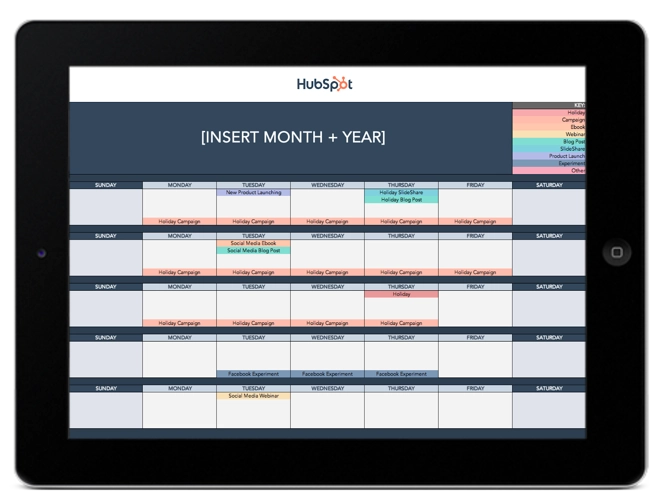Managing social media accounts for a brand is not easy – and one of the biggest challenges is organizing your social media content.
Between managing social promotion goals from different departments, staying up-to-date on social mentions and trends, and posting relevant and engaging content on a regular basis, being a social media manager can sometimes feel like herding cats.
So, how do busy social media managers keep their ducks in a row? We asked the people who run social media for their brands from across the U.S. for their best tips on staying organized. Here's what they shared with us.
Social Media Organization Tips
- Keep an updated content calendar.
- Schedule social posts ahead of time and in bulk.
- Use a to-do list app.
- Know where to find trending topics.
- Maintain an 'Inbox Zero' mentality.
- Have a dedicated 'Social Content' folder in your email.
- Create a form for social promotion requests.
- Use Canva to make batches of similar images.
- Organize your windows and tabs in a specific order every day.
- Set a time limit for each task.

Free Social Media Content Calendar Template
Download the free template and user guide to manage your social media posts and strategy.
- Coordinate campaigns
- Increase your reach
- Measure engagement
- Plan your posts
Download Free
All fields are required.

1. Keep an updated content calendar.
Planning out social media posts is time-consuming, so keeping track of it all with a content calendar can help cut down on time.
"I keep an updated content calendar that includes all our social networks and the types of content we'll be posting on each one," says Georgie Morley, community manager at Bai.
She then creates both a daily and weekly to-do list based on the calendar.
"I make sure there's flexibility because something always comes up – you have to be prepared to fight some fires."

To help you plan your updates and coordinate social campaigns more easily, here's a free social media publishing template.
2. Schedule social posts ahead of time and in bulk.
Scheduling posts saves a lot of time, and it allows you to focus on other parts of your job instead of being constantly distracted by the need to publish at certain times of day.
Former HubSpot Social Media Manager Robyn Showers used to Tweet from the @HubSpot account 24 or more times per day, not including replies to other Twitter users.
To save time, she used Social Inbox to schedule tweets in bulk by uploading them from a spreadsheet. HubSpot customers: Learn how to use the bulk scheduling tool here.
"I also tend to schedule Facebook, LinkedIn, and Google+ posts several days ahead of time," said Showers.
3. Use a to-do list app.
Social media managers would be lost without their to-do lists. Oftentimes, the question is: What's the best to-do list app out there?
There is a lot to choose from – Todoist, TickTick, Any.do to name a few. To narrow down your options, here are a few key features to look for:
- Syncing option between devices
- Recurring due dates and reminders
- Priority levels
- Categories
- Task sharing and delegation
- Calendar feeds
4. Know where to find trending topics.
What's trending right now? What has the Twitter timeline buzzing? Which news stories are people talking about?
These are all questions social media managers need to be thinking about – not just when they arrive at work in the morning, but all day long. By staying on top of rising trends, social media managers can properly newsjack, which can bring terrific spikes in traffic to your website.
How do you stay on top of it all when things are changing so fast? First, sign up for an RSS reader like Feedly and subscribe to industry news sites and blogs that post on industry trends and topics.
5. Maintain an "Inbox Zero" mentality.
For most people, high productivity comes from closing out of email for several hours at a time. `This couldn't be less true for social media managers who need to stay alert to incoming requests.
Back when Laurie Meacham led the social media team at JetBlue, they had to stay on top of Twitter mentions in addition to social post requests from their marketing, public relations, operations, and customer commitment teams. How do they do it?
"I maintain the 'Inbox Zero' mentality so I know what's new and what needs my action," she said. "That way, it doesn't get lost in mountains of unimportant emails or assignments."
It can be easy to lose important emails below the fold, so star (or flag) the ones you want to refer back to and set alert notifications for your most important senders.
6. Have a dedicated "Social Content" folder in your email.
As a social media manager, one of your many jobs is to collect all of the content your company creates, sift through it, and create bite-sized social posts your audience can digest quickly.
But with so many incoming content and promotion requests, how do you make sure you don't overlook or forget about the important stuff?
When it comes to sifting through and bookmarking content, former Social Media Manager at HubSpot Brittany Leaning recommends creating a folder dedicated to social content.
For Leaning, many of these emails included upcoming webinars, product launches, or marketing collateral from other companies that she thought the HubSpot audience would appreciate.
"My routine consisted of going through every single HubSpot blog post that was published in the last week, and scheduling the evergreen posts for the following week,” she said. “I'd do the same thing with all our relatively new evergreen efforts. This would keep the social publishing machine going while I looked for opportunities for newsjacking or other time-sensitive content."
After creating the folder, have a routine in which you sift through it when you need inspiration for new content and remove outdated content after a certain time has passed.
7. Create a form for social promotion requests.
To minimize the number of social media promotion requests you get via email and instant messaging, field these requests through a form.
.webp?width=310&height=363&name=10%20Best%20Social%20Media%20Organization%20Tips%20and%20Tricks%20for%20Managers%20(1).webp)
This way, you free up your email and IM and you now have a dedicated place to review requests.
If you’re concerned about time-sensitive requests, you can add a note that specifies the best way to contact you or your team for urgent requests.
8. Use Canva to make batches of similar images.
Canva is a wonderfully simple (and free) graphic design platform that social media managers can use to create social media templates.
Maintaining a consistent aesthetic is very important on social media. With Canva, you can create templates, get them approved by your branding team if necessary, and use them whenever you’re posting on social media.
You can create multiple folders based on the post category, the platform, or the visual format – how you organize it is all up to you.

Free Social Media Content Calendar Template
Download the free template and user guide to manage your social media posts and strategy.
- Coordinate campaigns
- Increase your reach
- Measure engagement
- Plan your posts
Download Free
All fields are required.

Showers would use Canva to create images in bulk for HubSpot's campaigns on social.
"Anytime we run a campaign to promote an ebook, webinar, or another valuable piece of content, I want to have at least five creatives to test on Twitter," she said.
To create those creatives, she only has to design one image on Canva, then she uses the "copy" tool (shown below) to duplicate the image and create multiple versions while retaining the core design elements.
.webp?width=600&height=289&name=10%20Best%20Social%20Media%20Organization%20Tips%20and%20Tricks%20for%20Managers-1%20(1).webp)
9. Organize your windows and tabs in a specific order every day.
When you're juggling your email, calendar, social streams, post requests, links, and so on and so forth, you can easily lose track of which tab is where. One member of JetBlue's social team suggests keeping windows and tabs open in a specific order that you'll get used to and memorize quickly.
The JetBlue team also suggests getting into the habit of closing out of tabs as soon as you're done with them.
"We get sent so many links that, if I'm not careful, I'll have 30 articles open as well as Fly-Fi selfies and pictures of suitcases with wheels and zippers missing."
If someone tweets a link at your brand, once you've addressed that tweet, close out of the link. This also helps ensure your toggle bars never get so crowded that you can't easily see updates as they happen.
10. Set a time limit for each task.
Social media managers tend to have jam-packed schedules that don't allow them to do one task for too long.
"It's easy to get lost in the endless streams of to-dos, research, and meetings," says Yip, "so it's important to schedule time limits for each task so you can stay focused and not spend too much time on one."
And finally, says the JetBlue social team, "Don't forget to blink!"
Staying Organized as a Social Media Manager
It’s one thing to get organized, it’s another to stay that way.
All of the tips outlined below require consistency. Otherwise, they won’t serve much of a purpose. As with everything, you incorporate these tips into your routine, you will slowly but surely see how much organized your days will become.
Pro-tip: Incorporate one tip at a time and pick based on your biggest pain point. For some, adding one thing at a time is much more manageable and makes it easier not to get overwhelmed by the changes.
Editor's Note: This post was originally published in Oct. 2014 and has been updated for comprehensiveness.






![How to Create a Social Media Report in 7 Simple Steps [+ Free Templates]](https://www.hubspot.com/hubfs/social-media-report-1-20240724-2630720-1.webp)

![Top 6 Social Media Marketing Challenges in 2024, According to 1,500+ Marketers [+ How to Face Them]](https://www.hubspot.com/hubfs/social-media-challenges-1-20241125-7808170.webp)

![The Best Social Media Platforms for Video Content in 2024 [Consumer Data]](https://www.hubspot.com/hubfs/Untitled%20design%20-%202024-09-13T190325.614.png)
![What Channels See The Most Social Media ROI? [New Data To Inspire Your Strategy]](https://www.hubspot.com/hubfs/social%20media%20advertising%20roi%20featured.webp)
![How (& Where) Consumers Discover Products on Social Media [New Data]](https://www.hubspot.com/hubfs/Untitled%20design%20-%202024-09-10T155918.760.png)
![How to Grow Your TikTok Following [Expert Insights + Data]](https://www.hubspot.com/hubfs/Untitled%20design%20-%202024-09-03T192654.523.jpg)
